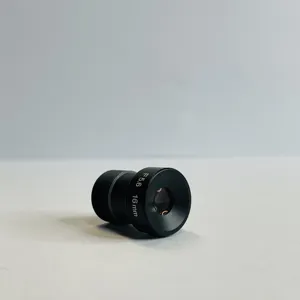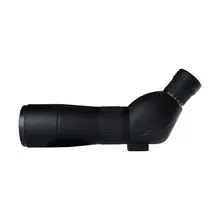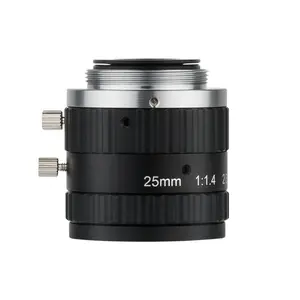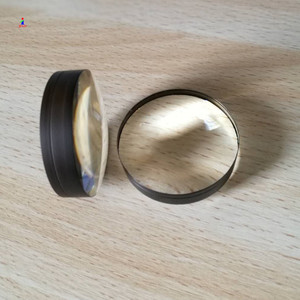Exploring Achromatic Lenses
Achromatic lenses are precision optical instruments engineered to rectify chromatic and spherical aberrations—two prevalent distortions in lens systems that can mar image sharpness and fidelity. These lenses are indispensable in fields demanding exact visual or photographic replication, including the use of microscopes, telescopes, and cameras. The essence of an achromatic lens lies in its capacity to focus disparate wavelengths of light at a singular juncture, thus substantially reducing chromatic and spherical distortions.
The lens's construction is key to its performance. Composed of at least two lens elements, often cemented together with a clear adhesive, achromatic lenses are adept at merging two specific wavelengths of light (typically red and blue or yellow and blue-violet) at one focal point. By integrating elements with distinct refractive indices, these lenses adeptly mitigate both chromatic and spherical aberrations, yielding images that are both crisp and color-accurate.
For professionals such as scientists, engineers, and photographers, for whom optical precision is paramount, achromatic lenses are essential. They offer a viable solution for scenarios where aberration correction is crucial to secure precise measurements and superior imaging. Selecting the right achromatic lens for a particular application guarantees peak performance and minimal distortion, leading to more dependable data and enhanced visual results.
Varieties of Achromatic Lenses
A plethora of achromatic lenses exist to cater to specific optical needs and uses. Examples include:
-
Doublet Achromatic Lens: A traditional configuration that pairs two lens elements with differing refractive indices, widely utilized in binoculars, telescopes, and other optical apparatuses where color correction and image quality are paramount.
-
Doublet achromat: A variant of the doublet with a reduced gap between elements, this design bolsters color correction and light transmission, ideal for precision-demanding tasks like semiconductor lithography.
-
Plano-concave and Bi-concave Lenses: These simpler designs feature one concave and one plano surface, often employed in educational contexts or basic optical tools where moderate correction suffices.
-
Aspherical Achromatic Lens: These sophisticated lenses merge aspherical and achromatic technologies to further diminish aberrations and elevate image quality, commonly found in high-end photographic equipment.
-
Meniscus Achromatic Lens: Meniscus lenses, with one concave and one convex side, offer achromatic correction and can be a cost-effective alternative to doublet achromats for certain uses.
Selecting the Right Achromatic Lens
Choosing the ideal Achromatic Lens for your enterprise involves a thorough evaluation of various aspects:
-
Material Composition: The choice of material, such as BK7 or fused silica, hinges on the wavelength range your application requires, each offering distinct optical characteristics.
-
Shape and Size: The lens's geometry (plano-convex, double-convex, etc.) and dimensions must be compatible with your system's spatial limitations.
-
Mounting: Achromatic lenses come in diverse mounting options that influence their integration into your system. Opt for a mount that ensures the necessary support and alignment.
-
Environmental Stability: If the lens must function in extreme conditions like high temperatures or corrosive settings, opt for achromatic lenses with suitable coatings to boost their resilience.
-
Customization: Tailor-made lenses may be necessary for some applications. Seek suppliers that provide OEM, ODM, or OBM services for customized solutions.
By meticulously weighing these factors against your specific requirements and leveraging Alibaba.com's filtering tools and product insights, you can identify reputable suppliers that offer quality Achromatic Lenses for your business.
Achromatic Lenses on Alibaba.com
Alibaba.com serves as a vast international bazaar, linking buyers with a broad spectrum of achromatic lenses from suppliers for a variety of industrial and commercial applications. With over twenty years of experience in B2B commerce spanning more than 190 countries, Alibaba.com has become a trusted platform for sourcing high-precision optical components from certified suppliers.
Alibaba.com enables buyers to discover achromatic lenses that meet specific needs regarding material, shape, size, and functionality. Whether in search of standard double convex lenses for imaging tasks or bespoke plano-convex models for OEM endeavors, Alibaba.com's extensive catalog transcends geographical and availability constraints.
Furthermore, Alibaba.com underscores secure trading with services like Trade Assurance, safeguarding payments until delivery confirmation. This dedication to a secure marketplace enhances buyer confidence when acquiring achromatic lenses for commercial use. Alibaba.com's intuitive interface, mobile accessibility, and multilingual support streamline international commerce, empowering businesses of all scales to effortlessly procure the right optical solutions.
Common FAQs for Achromatic Lens
What is an Achromatic Lens and how does it work?
An Achromatic Lens is crafted to minimize chromatic aberration by fusing two or more glass elements, each precision-engineered to refract light in a manner that negates these aberrations across the visible spectrum.
When would I need to use an Achromatic Lens?
An Achromatic Lens is essential when you require the focusing of white light into a single point without significant color distortions, as in applications like microscopy, laser cutting, or printing.
How do I determine the correct Achromatic Lens for my application?
Identifying the suitable Achromatic Lens for your system involves considering the unique requirements and constraints, such as focal length, numerical aperture, and transmission characteristics.
What are the key features to look for in an Achromatic Lens?
When selecting an Achromatic Lens, consider the material quality (e.g., optical glass or quartz), focal length, numerical aperture (NA), transmission qualities (e.g., clarity), and any additional coatings or treatments needed for particular uses.
Can Achromatic Lenses be used for both imaging and illumination purposes?
Achromatic Lenses are versatile and suitable for both imaging and illumination, but their design and construction must be tailored to the specific application.
What is the difference between a Plano-convex and a Double-convex lens?
A Plano-convex lens features one flat and one convex side, whereas a Double-convex lens boasts two convex surfaces. Both types are employed to focus or collimate light within optical systems, catering to diverse imaging or illumination requirements.
Are there any limitations to using Achromatic Lenses?
Achromatic Lenses do not compensate for spherical aberration and are unsuitable for scenarios where this type of aberration is critical, such as in high-resolution imaging or laser beam shaping.
How do I maintain the quality of my Achromatic Lens over time?
To preserve your Achromatic Lens's quality, clean it with suitable solvents and cloths, avoid physical impacts, and store it securely to prevent scratches or the deterioration of coatings.
Can I get customized Achromatic Lenses for specific applications?
Many suppliers offer custom Achromatic Lenses tailored to meet particular application demands, including bespoke focal lengths, specific transmission features, or unique mounting designs.
What should I consider when choosing an Achromatic Lens for outdoor use?
For outdoor applications, opt for lenses with protective coatings against environmental elements like UV light and abrasions. Materials such as quartz or sapphire glass are often preferred for their robustness and resistance to adverse conditions.































 浙公网安备 33010002000092号
浙公网安备 33010002000092号 浙B2-20120091-4
浙B2-20120091-4